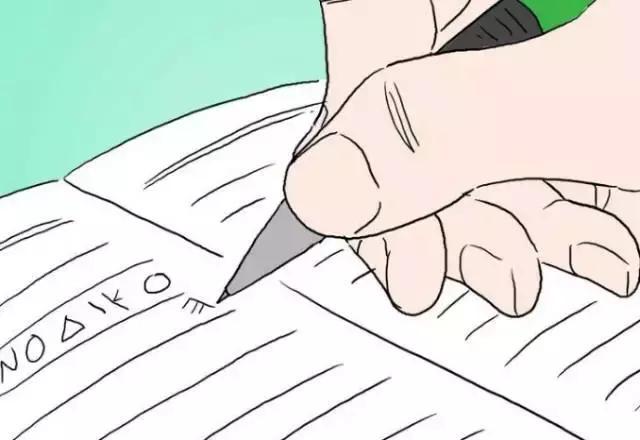下面是小编为大家整理的大班英语五官教案4篇(全文完整),供大家参考。

大班英语五官教案4篇
英语教学要鼓励学生大胆地使用英语,对他们在学习过程中的失误和错误采取宽容的态度。作为英语的你有在课前准备一篇英语教案?和我们分享一下。你是否在找正准备撰写“大班英语五官教案”,下面小编收集了相关的素材,供大家写文参考!
教学目标
知识与技能
(1)熟练掌握下列词汇:
rules, arrive, late, hall, dinning hall, listen, , fight, sorry outside,wear, important, bring, uniform, quiet
(2)熟练掌握下列短语:
dining hall, arrive late for school, (be) on time, listen to music break the rules, in class, be/ keep quiet, a lot of, bring …to…,wear a hat, have to, music players
(3)掌握下列句型:
1. Don't eat in class.
2. You must be on time.
3. Eat in the dining hall.
4. 正确使用情态动词can, can’t
——Can we wear a hat in school?
——Yes, we can./No, we can’t.
5. 能正确使用have to 和 must 谈论规章制度
We must be on time/ We also have to be quiet in the library.
教学重难点
重点:
1) 肯定祈使句是省略掉主语的原形动词开头;
2) 否定祈使句则是在肯定祈使句前加上“don’t”。
3) 情态动词must及have to在用法上的区别。
难点:
掌握祈使句的用法,并能听懂、会说一些简单的祈使句。
教学工具
ppt
教学过程
一.新课预习
1.小组合作学习本课单词,根据汉语写出下列英语单词。
规则_______ 到达_________ 准时___________走廊___________
礼堂_________ 餐厅_______________倾听___________________
听……______________打架_______________抱歉的_____________ 非常重要_____________ 带来;拿来_________________
不得不_____________ 校服;制服_________________
2.试着翻译下列句子。
Don’t arrive late for class. ___________________________________
Don’t run in the hallways. ___________________________________
不要在教室里吃东西。___________________________________
不要在教室里听音乐。___________________________________
二. 情景导入
教师进教室后,使用祈使句请学生们完成一系列动作:
Please stand up/ sit down. Close the door, please. Look at me and listen to me.
Don’t open your books. Don’t talk. Let’s begin our class.
学生听教师的指令完成各种动作,教师也可将指令写到黑板上,让学生从视觉上考察祈使句的特点。
三.合作探究
1.教师出示书上1a 的图片,向学生提问。
指着图上奔跑的男孩提问
T:What’s the boy doing? S: He’s running.
T: Where is he running? S: He’s running in the hallways.(板书,教读)
T:Can you run in the hallways? S: No, I can’t.
T: So please don’t run in the hallways.(板书,教读)
(= You can’t run in the hallways.)
学生跟读数遍,明白祈使句和“can”的表达含意。
T:Why is he running in the hallways? S: He’s late.
T: Oh, he’s late for class.(板书,教读)
You can’t arrive late for class.(板书,教书) = Don’t arrive late for class.
…
2.work on 1a
学生看图,完成1a的内容,检查答案并大声朗读校规。
3. Listening
学生们听录音,完成1b,选出四位学生都违反了哪条校规;听之前,学生要读会英文名。
Check the answers:
4. Pair work
学生朗读1c部分的句型;两人一组对话表演,学生可经过讨论,多说出他们想到的校规,不必只限于书上.
5. Listening
Work on 2a:
First, read the sentences in 2a together.
Ss listen to the recording and check the activities they hear.
Play the recording again for the Ss to check the answers.
Work on 2b:
Listen to the recording again. Can Alan and Cindy do these activities? Circle can or can't above.
Check the answers:
6. Pair work
Talk about the rules in 2a.
Let some students come to the front and act out the conversations.
课后小结
点拨总结
1.arrive late for school/ be late for school/ come to school late 上学迟到
2.arrive in/ at + 地点 in class 在课堂上
get to + 地点 in the classroom 在教室里 wear “穿着,戴着” be in + 颜色(穿......颜色的衣服) sound “听起来”系动词后接形容词
3. 祈使句的用法:祈使句是用来表示请求,命令,叮嘱,邀请,劝告等的句子,一般以动词原形开头。
a) V型祈使句(以行为动词开头) Listen to me,please. 请听我说.
b) B型祈使句(以Be开头) Be careful!小心!
c) L型祈使句(以Let开头)Let me help you. 让我帮助你.
d) D型祈使句(以Don’t+动词原形开头) Don’t talk in class.
4、must和have 的区别
must “必须”(强调主观意志);没有人称和数的变化;否定:mustn’t “不准”
have to “必须”(强调客观因素)三人称用:has to; 否定:don’t/ doesn’t have to
5. a lot of= lots of/ many/ much
6. bring sth. to sb.“带…来…”= bring sb. sth.
课后习题
训练评价
一、单项选择
( )1.-- Don’t run in the room. -- ,Uncle.
A. Excuse me B. Sorry C. No
( )2. Peter wear sports shoes for the gym class today.
A. have to B. has C. has to
( )3. Our teacher us not to arrive late for the class.
A. says B. talks C. tells
( )4. -- we have to clean the classroom after school? --Yes, you .
A. Can, can B. Do, have C. Do, do
( )5.You can’t eat outside. It’s dirty.
A. in B. at C. /
2. 完成下列句型转换试题
1)I can play computer games on weekends.(一般疑问句)
_________________________________? Yes, ____________.
2) He has to wear uniform.(变否定句)
He _____ _____ _____ wear uniform.
3) I have to wear sneakers for gym class.(一般疑问句)
_____ you ____ ____ wear sneakers for gym class? Yes, I ____.
4) They have to wash clothes.(提问) ____ do they have ____ ____?
5) You can’t go out on school nights.(换一种表达) _______ go out on school nights.
6) Don’t talk in class.(同上) No _________________________.
教材分析:
教材分析本单元是对英语中一般现在时句型的扩展和练习,学生可以运用所学语言讨论动物习性这一真实语言情景,将语言变得生活化、情境化,从而掌握一般现在时的各种句式。本课没有偏词难句,主要的语言功能就是让学生会用简单的句式介绍和描述动物的习性。
学情分析:
小学生都具有好奇、好玩、好动、好表现、好表扬等心理特点,同时对新奇的事物非常感兴趣。同时,六年级学生也具备了一定的合作能力和参与意识,在一定的情境中,学生能够积极的参与、大胆表达、勇于合作,展现出良好的学习氛围。
教学目标:
《小学英语课程标准》强调指出:“英语教学要重视对学生实际语言运用能力的培养,重视学生的学习方式和任务型的教学途径,发展学生的综合语言运用能力。” 根据以上要求及对学生实际情况的分析,我制定了如下教学目标。
(一)知识与技能:引导学生运用一般现在时的句子介绍动物习性。
(二)过程与方法:学生通过小组合作,组内讨论,组间交流,培养学生自主学习和运用语言的能力。
(三)情感态度与价值观:通过了解动物与人类的和谐关系,激发学生热爱动物的情感和自觉保护动物的意识。
教学策略:
(一)教学方式与学习方式 [教学方式:“任务型”教学方式 学习方式:自主探究、合作交流] 本课的设计中,我运用了“任务型”教学方式,要求学生通过表达、询问、解释、沟通、交涉、协商等多种语言活动形式来完成任务,同时注重英语中听、说、读、写各项基本技能的训练;英语课程标准强调重视学生实际语言运用能力的培养,倡导体验、实践、参与、合作与交流的学习方式。学生将在“任务型”教学方式的引导下,在自主探究与合作交流中学习和运用语言。
(二)评价方式 [评价方式:多元性评价] 心理学家指出:学生在课堂上有获得表扬的需要,评价的主体应该是多元性的。所以,在教学中我着眼于学生语言运用的培养,采用激励性评价、师生评价、生生互评等多元性评价方式,在教学活动中充分激发学生的求知欲和表现欲,实现教学过程的化。
(三)教学手段
1、结合本课教学目标我设计了“猜谜语”、“听音排序”、“听音写词”、“动物习性的讨论”、 “学说小韵诗”、“写写喜爱的动物”等几项任务。
2、利用图片,激发学生的学习兴趣。
3、采用小组比赛的形式,激发学生积极参与,培养其集体荣誉感。
教学过程:
一、Warm up
T: Good morning, boys and girls!
Ss: Good morning, teacher!
T: Pleased to meet you!
Ss: Pleased to meet you, too!
T: Now relax yourself. Let’s listen to music.
(Play the song Old MacDonald had a farm.)
Ss: (Listen, repeat and clap.)
T: This song sounds nice. There are lots of animals in the song. Yes?
Ss: Yes!
T: Do you like animals?
Ss: Yes!
T: Now I say, you guess which animals they are. Let’s have a match between four groups. OK?
Ss: OK!
T: Number
1. They’ve got long tails. They climb trees very fast. They like bananas. What are they?
S1: They are monkeys.T: You are very clever! Group 2 can get a flag.
T: Number
2. They are tall. They’ve got long necks. What are they?
S2: They are pandas.T: Fantastic! Group 3, a flag!
T: Who can say another animal?
二、Presentation
T: So many animals! I like pandas. But I don’t like snakes. (Write on board.) What about you?
S1: I like monkeys. But I don’t like tigers.
S2: I like bears. But I don’t like dogs.
T: Good. And do you know what do pandas love? (Write the title: Unit 2 Pandas love bamboo.)Ss: (Read the title together for twice.)
T: Today we’ll discuss some animals. Let’s see what they are.(Show the pictures of animals.)
Ss: (Read and spell the words together for twice.)
三、New contents
T: These animals are lovely. You can see them on your books. Now listen to the tape, order the pictures.
T: Now I’ll check the answers. Who can tell me?
S1: Number 1 is …T: Excellent! And what do they like? Let’s listen, then you should say and write down the sentences.
T: First, which animals?
Ss: Snakes.
T: Who can repeat the sentence?
S3: Snakes love the sun.
T: Great! (Write on the board.) Read together, please.
Ss: Snakes love the sun.
T: Next, which animals?
Ss: Elephants.
T: Who can repeat?
S4: Elephants like water.
T: Can you write on board?(The same process for the other animals.)
Ss: (Read the sentences together.)
T: (Correct the mistakes.)
T: Now I say numbers, you say the sentences.
T: Who can come here and point to the pictures for us?
S2: I can. …You are very good!
四、Practice
T: Can you remember now?
Ss: Yes!
T: OK. I say, you guess. They love the sun. What are they?
S5: They are snakes.T: Very good. Now work in pairs, practice part 2.
Ss: (Work in pairs to do the practice.)
T: Who want to show your dialogue?Ss: (Several groups act out.)
T: You did a good job! Now let’s learn another animal----owl.(Read and explain the word.)
T: I’ll ask students to explain the sentences.
Ss: (Study the chant, and then say with the rhyme.)
五、Enlargement
T: Today we’ve learnt lots of animals. But which do you like? Now talk in groups: What are your favorite animals? Why?
Ss: (Talk in groups.)
T: Stop! Now write down your ideas. You can write like this: My favorite animals are …Because… T: Who want to read your sentences?
S1: …
S2: …
T: You are very lovely. We love animals, because they are our good friends. Let’s read loudly!
Ss: We love animals, because they are our good friends.
T: Again! Louder!
Ss: We love animals, because they are our good friends!
T: Well done, children! You should remember this sentence.Class is over. Goodbye, children!
Ss: Goodbye, teacher!
教学目标
Key words: short, curly, long, tall, straight hair, a medium build, thin, heavy, bald;
brown, blonde;
glasses, hair, beard, mustache.
New language:
What do you look like? I’m short. And I have curly hair.
What do they look like? They’re medium height. And they have short hair.
What does he look like? He’s heavy and he wears glasses.
What does she look like? She’s thin and she has long hair.
教学重难点
Importance: Describing people. Such as tall or short… and who has long hair and short hair…
Difficulties: use the sentences correctly to describe the physical appearance.
III. Teaching Steps:
教学工具
课件
教学过程
Step 1 Greetings
Step 2 Ask some students to name some ways of describing people. Start students off with examples such as tall and short. Point out various students in the class and ask students to say if they are tall or short.
Step 3 Some new words about this part
(1a) This activity introduces the key vocabulary. Ask students to read the list of words. Point to the letters next to the people in the picture. Point out the sample answer. At last, check the answers.
(1b) This activity provides guided listening and writing practice the target language.
Play the recording the first time, then , play it again, this time, students fill in the blanks in the speech bubbles.
Correct the answers.
Language points: 1.He’s the tall boy with the curly hair.
(1c)This activity provides guided oral practice using the target language. Ask the students to ask and answer the questions. Then have students work in pairs. As they talk, move around the room monitoring their work.
Language points:
2.What does your friend look like?你的朋友长得什么样?
look like “看起来像,看起来是……的样子”like 作介词,意为“像….”
eg. What’s he like?
Jack is very like his father.
look like 看起来像 The girl look like her mother.
look 看起来 后加形容词作表语 His sister looks happy.
look the same 看起来很像 The twins look the same.
(2a)This activity provides guided listening practice using the target language.
Point to the list of nice phrases and ask a students to read them to the class. Play the recording twice. And complete the answers. Then correct the answers.
(2b)Ask the students to listen to the descriptions and write the words in the correct column after each person’s name.
(3)Writing practice: Have students do the activity individually. Offer help as necessary.
(Grammar focus) Review the grammar box. Ask students to read the questions and answers. Point out: ①does, goes-----you, they do, go--------he, she.
②I’m, they’re, he’s and she’s -----height
(3a)This activity provides reading practice using the target language. Have a student read the first description. Check the answers.
Language points:
3.She has a medium build, and she has long hair. 她体格中等,留着长发。
①medium ,adj.中间的,中等的,普通的 a man of medium height medium size
②build 多用作动词,但在句中是名词,意为体格。
His uncle is a man of strong build.
They are building a new school.
③hair 常用作集合名词,“头发,毛发”
Mr Green has blond hair.
His mother’s hair is turning gray.
如果侧重指(一根一根的)头发,有其复数形式hairs.
My father has quite a few gray hairs.
4.She’s good-looking but she’s a little bit quiet. 她很漂亮,但是有点不大爱说话。
①a little bit 常用于口语中,“稍微,有些,少许”相当于副词。接近于a little.
It’s a little bit cold today.
I feel a little tired now.
This shirt is a little too large for me.
②quiet 是形容词,“寡言的,稳重的,温顺的”
His daughter is a quiet child.
③good-looking, beautiful, pretty与handsome
good-looking 常用于指容貌美,beautiful 表示接近和谐理想的美; pretty并非表示完美无缺的意思,而是着重表示“可爱,令人怜爱”;handsome 指容貌端正英俊的,形容女性时,作“健美的”。他们常用于一些特定的人或事物。
项目-词汇 beautiful pretty good-looking handsome
women(女性) √ √ √ √
man (男性) × × √ √
child(小孩) √ √ √ ×
bird(鸟) √ √ × ×
flower(花) √ √ × ×
village(村庄) √ √ × ×
picture(画) √ √ × ×
dress(服装) √ √ × ×
voice(声音) √ × × ×
5.Xu Qian loves to tell jokes .俆倩喜欢说笑话。
①love 在本句中为“喜欢, 热爱”常可用于“love+doing/ to do”的结构中。
His brother loves jazz.
Miss Read loves her cat more than anything else.
They all love to dance .
love 作动词还常表示为“爱,疼爱,爱惜”
They both love each other.
②tell jokes 意思为“说笑话”,类似的短语还有 tell a story, tell a lie, tell the truth.
6.She never stops talking.他从来都是喋喋不休的说。
①never 是副词,意思为“决不,永不,从未,一点也不”
never 通常置于一般动词之前,be动词、助动词之后。
I never get up early Sunday morning.
She is never late for school.
有时置于句中特定词(短语)之前,以强调该词的否定意味。
They spoke never a word to each other.
never 可依置于命令动词之前。
Never eat too much.
②stop doing / stop to do
stop 后接动名词,表示停下动名词所指的动作; stop 后接不定式,表示停下其他事情,去做不定时所指的动作。
He stopped drinking water. 他停下(不再)喝水。
He stopped to drink water. 他停下(停下手)来喝水。
7.He likes reading and playing chess. 他喜欢读书下棋。
①read 多指看文字性的东西,“看”实际上就是“读”,作及物动词和不及物动词都可以。
Children usually like reading picture-books.
Don’t read in the sun.
②look 为不及物动词,后面接宾语时,需用介词at,表示看的过程,强调有意识的动作,多用来唤起别人的注意。
Look! Who’s the man under the tree?
③see 能用作及物动词后接宾语,也可用作不及物动词,着重于看的结果,“看到,看见”
但不一定是有意识的。由于see强调的是结果,所以一般不用于进行时态中。
Can you see the kite in the tree?
固定搭配:see a doctor see a film
④watch 为及物动词,用来指非常仔细的、有目的或特意的动作,表示“注视、观看、监视”。
My parents often watch me do my homework..
The teacher often watch them playing games.
注意:看电视,看比赛 习惯上多用watch表示,即:watch TV, watch a game.
⑤play chess 意思为下棋,play常可作“比赛,竞赛”等,但要注意,play 与比赛、游戏用在一起时,比赛游戏前不加冠词。
Let’s play football after school.
Look! They are playing cards under the tree.
(3b)Practice the target language.
Have two students read out the example dialogue in the speech bubbles. And then have several pairs present their dialogues to the class.
(4)Ask some students to describe a person while their classmates guess who it is.
Step 4 Do some exercises to practice.
Step 5 Blackboard design
Step 6.Homework.
① Read all the words and remember the key words and can use freely.
②Say some sentences about one person’s appearance.
课后小结
学了这节课,你有什么收获?
课后习题
完成课后练习题。
教学目标:
1,知识与能力目标
熟练掌握单词与短语:blind, show,special,clever
熟练掌握重点语句:This dog can help him.
Can Fifi help the blind people?
No, he can’t .He only wants to play.
使学生能够灵活运用can ,can’t 描述动物具有的能力,并且能用can对动物是否具有某种能力进行提问。
2,情感态度目标
培养学生热爱动物,热爱大自然,热爱我们周围环境的意识。
教学策略:
简笔画,小组讨论,
教学过程:(请写清每一教学环节的设计意图)
Step 1 Warming up
Draw an animal on the blackboard. Let the students guess what animal it is .
It’s a dog.
(通过逐步画出的小狗既引起学生的兴趣,又引出本课关于导盲犬的话题)
Step 2 Presentation and practice
1. Draw a man beside a dog. Then draw the man to blind. Talk about it then teach the word“blind”.Watch a TV show and answer a question“Who can help the blind man ?”
2. Listen to the passage and repeat it. Try to be the TV presenter.
1)跟读一遍刚刚观看过的盲人与导盲犬的电视节目的文章。
2)请学生试读缺少个别词语的文章。
3)小组练习,根据每句提示词试复述文章。
3.Listen to CDROM and answer the question “Can Fifi help the blind people? ”
Write down the sentence on the blackboard and repeat it.
4.Listen again and answer the question “What does he want to do?”
5. Listen and circle the sentences with “can or can’t”.
6. Memorizing game. Guess what the special animals can do .
7. Listen the passage and repeat it.
8. Do some exercises on AB p26 1: Read the text and circle.
(通过听读和练习使学生对课文有基本的掌握,并能基本流利朗读、初步记忆)
Step 4 Consolidation and extension
1. Talk about pictures about some special animals. Then the students talk about them in group using "This…can … . This …can’t … . "
3. Give each group a picture of an animal, let each group watch and discuss. For example, “It’s white. It’s fat. It can catch the mouse. It can’t swim.”
Then show it.
(通过练习使学生既掌握住can和can’t的用法并复习形容词的用法,又学会对动物能力的描述)
Step 5 Summary
1, 引导学生自主回顾本节课所学知识,引导学生发现生活中动物对人类的帮助,培养学生热爱动物,热爱大自然的意识。
2, 用课件展示搜救犬、缉毒犬、警犬等多种犬类,并显示英文。让学生在知晓狗是人类的朋友的基础上展示“The dogs are our friends. We love dogs. We love animals.”
Step 6 Homework
1. Listen to the tape for 5 times .
2. Try to find other helpful animals and try to describe them.
(让学生通过练习进一步巩固对课文的掌握并学以致用,学会描述动物是人类的朋友)



